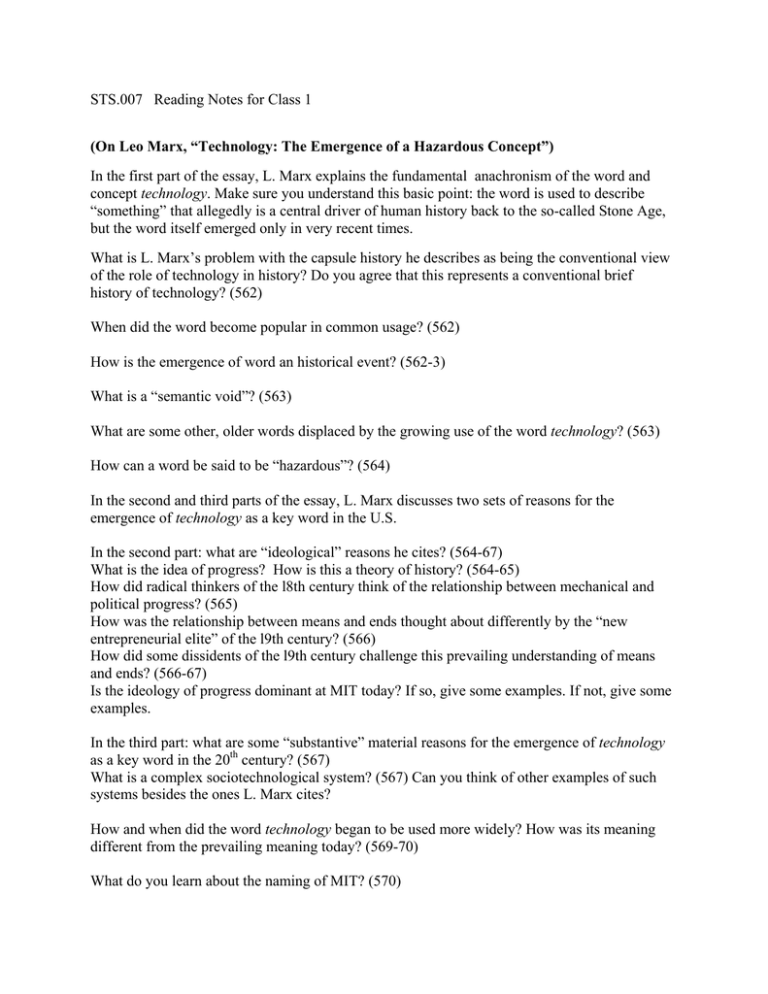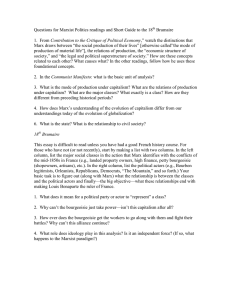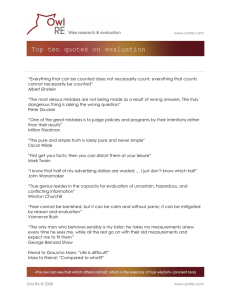STS.007 Reading Notes for Class 1
advertisement

STS.007 Reading Notes for Class 1 (On Leo Marx, “Technology: The Emergence of a Hazardous Concept”) In the first part of the essay, L. Marx explains the fundamental anachronism of the word and concept technology. Make sure you understand this basic point: the word is used to describe “something” that allegedly is a central driver of human history back to the so-called Stone Age, but the word itself emerged only in very recent times. What is L. Marx’s problem with the capsule history he describes as being the conventional view of the role of technology in history? Do you agree that this represents a conventional brief history of technology? (562) When did the word become popular in common usage? (562) How is the emergence of word an historical event? (562-3) What is a “semantic void”? (563) What are some other, older words displaced by the growing use of the word technology? (563) How can a word be said to be “hazardous”? (564) In the second and third parts of the essay, L. Marx discusses two sets of reasons for the emergence of technology as a key word in the U.S. In the second part: what are “ideological” reasons he cites? (564-67) What is the idea of progress? How is this a theory of history? (564-65) How did radical thinkers of the l8th century think of the relationship between mechanical and political progress? (565) How was the relationship between means and ends thought about differently by the “new entrepreneurial elite” of the l9th century? (566) How did some dissidents of the l9th century challenge this prevailing understanding of means and ends? (566-67) Is the ideology of progress dominant at MIT today? If so, give some examples. If not, give some examples. In the third part: what are some “substantive” material reasons for the emergence of technology as a key word in the 20th century? (567) What is a complex sociotechnological system? (567) Can you think of other examples of such systems besides the ones L. Marx cites? How and when did the word technology began to be used more widely? How was its meaning different from the prevailing meaning today? (569-70) What do you learn about the naming of MIT? (570) Did Karl Marx play an important role in popularizing technology? Read carefully K. Marx’s definition of the term in Capital. (570) Do you think it is adequate? Illuminating? What is the Second Industrial Revolution? (For that matter, what is the first Industrial Revolution?) (571) Who are some social scientists and other writers who introduced technology into more common usage? (572) In the last part of the essay. L. Marx summarizes his case that technology may be a hazardous concept. He begins by returning to the concept of a “semantic void.” Make sure you understand what this is. (573) What is paralypsis? (573) What are some reasons L. Marx gives for the popularity of the word and concept technology in the 20th and now the 21st century? What unfortunate associations does it leave behind, in contrast to older terms? (573-74) How does the word technology blur the boundary between material and non-material (bureaucratic, ideological) components of a sociotechnological system? Where is the boundary between technology and the rest of society and culture? (574-75) Is this expansive character part of what makes technology “hazardous”? What does it mean to attribute historical agency to technology? What is reification? (576) How is it hazardous to attribute technology with the power of historical agency? What are some other possible sources of “agency” in history? (576-77) Summarize the reasons why L. Marx concludes that technology is a hazardous concept. MIT OpenCourseWare http://ocw.mit.edu STS.007 Technology in History Fall 2010 For information about citing these materials or our Terms of Use, visit: http://ocw.mit.edu/terms.




